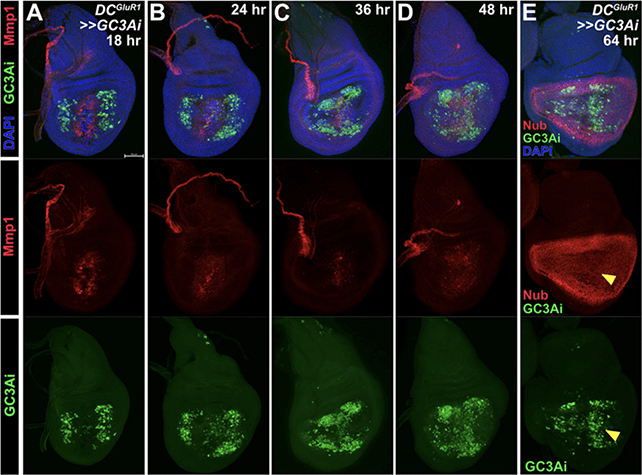A new study reveals some surprising discoveries about healing processes that are potentially triggered by the process of necrosis, or premature cell death.
Necrosis can be triggered by illness or injury – causing significant damage after heart attacks and strokes, for example. It’s a messy death for cells and tissue, unlike the planned cell death called apoptosis that’s a healthy part of the biological cycle.
When studying necrosis in fruit flies (Drosophila melanogaster, well known for their regenerative capabilities), a team of researchers at Arizona State University (ASU) noticed something unexpected: in their dying moments, cells surrounding those hit by necrosis send out signals encouraging cell growth in healthier parts of the tissue.

This is done by triggering the production of enzymes known as caspases. In apoptosis, caspases act as executioners, but when summoned by necrosis across relatively long distances, another type of caspase appears to promote healing in certain cells instead.
“This finding is significant because it not only adds to the body of evidence that caspases are involved in signaling events that promote repair, but also shows for the first time that this phenomenon occurs following necrosis,” says geneticist and developmental biologist Rob Harris of ASU.
The new research builds on a 2021 study in which some of the same researchers noticed necrosis-affected cells sending out signals – not just to the cells surrounding the tissue damage, but to other unaffected cells farther away. These latest findings help to add more clarity about what exactly is happening.
And while we haven’t seen this happen in humans yet, and our bodies are much more complex than those of fruit flies, if we can gain a better understanding of this process, then we may be able to investigate harnessing it to facilitate our own healing.
The researchers are hopeful that the newly discovered Necrosis-induced Caspase Positive (NiCP) cells can teach us more about tissue regeneration and wound repair. Only some of the caspase-enabled cells reacting to necrosis survived though. Knowing the reasons for this will be an important next step.
“Altogether, our latest findings suggest a model in which necrotic injuries induce caspase activity in cells at a distance from an injury,” says research technician Chloe Van Hazel of ASU.
It’s still early days for this research, but it’s an intriguing discovery in the field of tissue repair and regeneration, and the molecular processes behind it, and how those processes (like caspase function) can adapt based on context.
As a species, we’re pretty good at fixing ourselves up, but we could do better, especially as we get older. It’s possible that this is something our bodies have become worse at as we have evolved over time, but relearning these skills could have profound health impacts.
“Our findings reinforce the idea that there is much more to be understood about the role of caspases in tissue repair,” says Harris.
“For now, they reveal an important genetic response to cell death that could potentially be leveraged to augment the regeneration of necrotic wounds.”
The research has been published in eLIfe.










